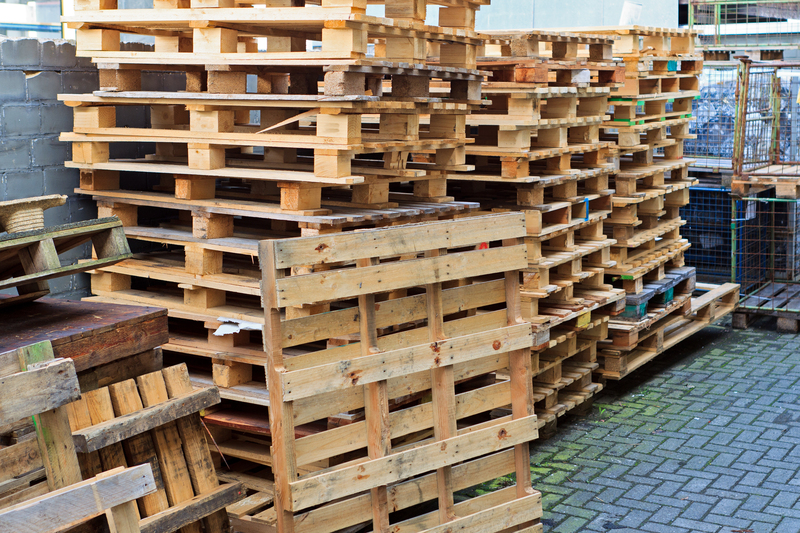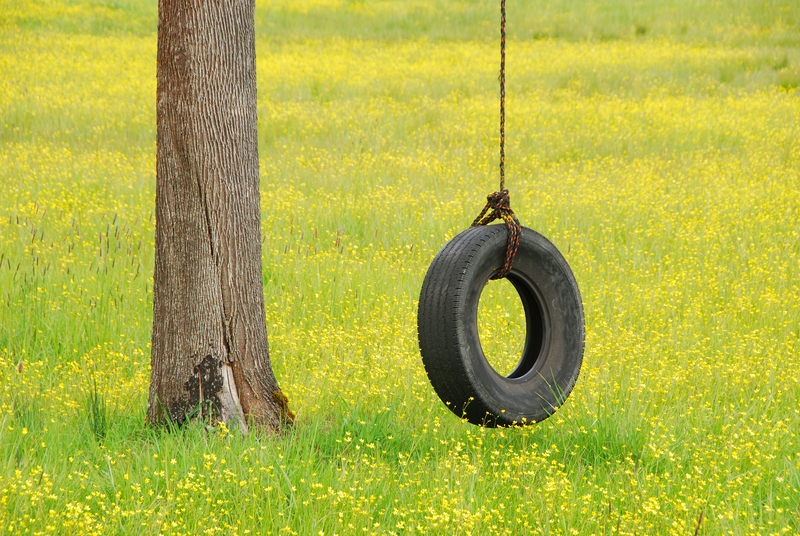Uncovering New Methods to Stop Microplastic Pollution
Microplastic pollution is an escalating environmental threat that impacts global ecosystems, human health, and the intricate web of life in our oceans and waterways. As public awareness increases, it is essential to highlight new and innovative approaches for halting microplastic contamination. This comprehensive article explores cutting-edge methods to stop microplastic pollution, summarizes ongoing research, and offers actionable strategies for both individuals and industries. Whether you're an environmental advocate, policy maker, or concerned citizen, understanding these approaches is crucial for safeguarding our planet's future.
Understanding Microplastics: Scope and Scale of the Problem
Before delving into solutions, it's important to understand the nature and pervasiveness of microplastic pollution.
What Are Microplastics?
Microplastics are plastic fragments smaller than 5 millimeters, resulting from the breakdown of larger plastics or manufactured intentionally for products like cosmetics, detergents, and industrial applications. They are found virtually everywhere on Earth: in the remote Arctic, the deepest trenches of the oceans, urban waterways, soil, marine life, and even in the air we breathe.
- Primary microplastics: Intentionally produced small plastics (e.g., microbeads in personal care products, pre-production pellets)
- Secondary microplastics: Fragments from the degradation of larger plastic objects (bottles, bags, fibers from synthetic clothing)
Why Are Microplastics a Serious Threat?
- Biodiversity Impact: Microplastics are ingested by marine organisms, causing physical harm, toxic exposure, and bioaccumulation through food chains.
- Human Health Concerns: These contaminants have been detected in drinking water, seafood, table salt, and even human tissues.
- Persistent Pollution: Microplastics do not easily degrade, making remediation and cleanup an enormous challenge.

Uncovering Innovative Solutions to Stop Microplastic Pollution
Global awareness has spurred a wave of innovation. Below, discover the most promising and recently developed methods to stop microplastic pollution, leveraging advances in science, engineering, and community action.
1. New Filtration Technologies
Traditional wastewater treatment plants lack efficiency in capturing microplastics. However, modern filtration systems are emerging as front-line solutions.
- Advanced Membrane Filtration: Nanofiltration and ultrafiltration membranes have the ability to filter particles far smaller than conventional filters can manage. Upgrading municipal and industrial sewage systems with these membranes has shown to remove up to 99% of microplastics from wastewater.
- Bio-based Filters: Scientists are investigating organic filtration materials derived from banana peels, fungi, and coconut shells as eco-friendly alternatives for microplastic removal in water systems.
2. Microplastic Capture Devices on Waterways
- Interceptor Systems: Projects like The Ocean Cleanup have deployed barriers and solar-powered barges that trap plastic debris, including microplastics, before it reaches the open sea.
- Drainage Netting: Urban municipalities are implementing fine-mesh netting in stormwater drains to capture microplastic fragments in runoff before they reach rivers and oceans.
3. Bioremediation and Enzyme Technologies
Biotechnology is on the brink of revolutionizing how we address microplastic contamination:
- Plastic-eating Microorganisms: Researchers have identified bacterial strains (Ideonella sakaiensis) and fungi that naturally digest polyethylene terephthalate (PET) and other plastics, converting them into harmless byproducts.
- Enzyme-Engineered Solutions: Advances in genetic engineering have led to enzymes like PETase and MHETase, which can efficiently break plastic polymers into benign constituents.
4. Improved Textile Design to Prevent Fiber Shedding
Synthetic clothing is a significant source of secondary microplastics through washing processes. Addressing this at the source is vital:
- Innovative Fabrics: Companies are developing low-shedding synthetic fibers or blending synthetics with natural materials to reduce microfiber loss during laundry cycles.
- Washing Machine Filters: Simple add-on filters for home washing machines can capture up to 90% of released microfibers, dramatically reducing the load entering wastewater streams.
5. Policy and Supply Chain Interventions
Changing laws and industry practices is among the most effective ways to stop microplastic pollution at its source.
- Microbead Bans: Over 60 countries have prohibited the production and use of microbeads in cosmetics and personal care products.
- Extended Producer Responsibility: Legislations are holding companies accountable for the full lifecycle of the plastics they produce, including end-of-life disposal and microplastic generation.
- Ecological Labeling: New standards are emerging for labeling products based on their microplastic footprint, helping consumers and buyers make more informed decisions.
Recent Scientific Breakthroughs in Stopping Microplastic Pollution
The relentless pace of innovation means new discoveries are frequently reshaping our understanding and capabilities. Here are some of the latest research developments that signal hope for the future:
- Graphene Oxide-Based Filters: Researchers have engineered highly absorbent graphene oxide membranes that capture minute plastic particles from contaminated water, outperforming standard systems by a wide margin.
- Mussel-Inspired Marine Cleanup: Studies show that proteins secreted by mussels can clump microplastics together, making them easier to remove from water. Artificial analogues of this protein could be scaled for use in water treatment and river cleaning projects.
- Nanocellulose Sponges: Scientists have developed sponges made from plant-derived nanocellulose which show strong attraction to microplastics and excellent reusability, providing a promising low-cost filtration option for lakes and reservoirs.
Community and Consumer Action: Everyday Methods to Reduce Microplastic Pollution
While technological and policy advances are critical, everyday choices and grassroots initiatives remain equally important. Here's how individuals and communities can contribute to stopping microplastic pollution:
- Choose Natural Materials: Select clothes, home textiles, and products made from organic fibers like cotton, wool, or hemp whenever possible.
- Install Microfiber Filters: Retrofit washing machines and sinks with available microfiber filters to reduce household plastic fiber emissions.
- Avoid Single-Use Plastics: Opt for reusable bags, bottles, and containers to minimize waste that could degrade into microplastics.
- Support and Advocate: Participate in citizen science monitoring programs and urge local leaders to implement robust anti-microplastic measures.
Global Collaboration: The Key to Eliminating Microplastic Pollution
Microplastic contamination knows no borders. International efforts and cross-sector partnerships are vital for long-term success. Notable global actions include:
- United Nations Plastic Treaty: Countries are negotiating a landmark treaty to regulate plastics at a transnational level, including commitments to reduce and manage microplastics.
- Plastic-Free Waters Initiatives: Organizations like the Ellen MacArthur Foundation and the World Wildlife Fund (WWF) coordinate efforts among governments, industries, and civil society to develop scalable solutions and share best practices.
- Open Science and Data Sharing: Collaborative databases track sources and concentrations of microplastic pollution worldwide, improving targeting of cleanup efforts and policy action.
Challenges in Halting Microplastic Contamination
Despite the momentum, challenges remain in the fight to stop microplastic pollution:
- Detection Limitations: Some microplastics are too small to be easily detected or filtered, especially nanoplastics, which pose unknown health risks.
- Cost and Scalability: High-tech filtration and enzyme-based solutions can be expensive or difficult to deploy at the scale required to address global pollution.
- Behavioral Change: Reliance on disposable plastics persists due to convenience and a lack of affordable alternatives, especially in developing countries.

The Future: Integrating Innovation and Policy for Lasting Change
Stopping microplastic pollution will require an integrated strategy that combines:
- Investment: Funding for research and infrastructure upgrades, particularly in lower-income regions.
- Incentivizing Innovation: Supporting startups and organizations developing new filtration, remediation, and circular economy solutions.
- Stronger Policy Enforcement: Enforcing international agreements, extending producer responsibility, and imposing penalties for non-compliance.
- Public Awareness: Continued education about the causes, consequences, and solutions for microplastic pollution.
Conclusion: Hope and Urgency in the Fight Against Microplastic Pollution
In summary, uncovering new methods to stop microplastic pollution demands a multi-pronged approach: technological innovation, effective policies, alterations in consumer behavior, and strong global collaboration. Every year unveils fresh opportunities to tackle this insidious pollutant--a cause that unites scientists, communities, legislators, and citizens alike.
With knowledge, action, and determination, we can protect our waterways, wildlife, and future generations from the persistent threat of microplastics. The journey begins now--will you join the movement to halt microplastic contamination?